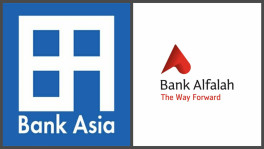Transition to renewables a must to ensure energy security for Bangladesh
The recent fuel price hike has adversely affected the country’s power generation capacity which resulted in the return of power outages after a decade. The present situation has reaffirmed the case for Bangladesh’s energy transition towards clean energy sources

With a population of around two billion, South Asia is considered as one of the vibrant economic regions due to its geographic location, market potential, and its diverse cultural background. And Bangladesh is one of the fastest growing economies in the region and in the energy domain, and it has achieved significant success in recent years.
Last year, the country announced its milestone success of bringing 100% of its population under electricity coverage. Bangladesh's present generation capacity stands at 25 GW and the per capita energy consumption is 560 kWh.
Bangladesh's electricity generation mix is greatly dependent on heavily subsidised domestic sources of natural gas, whose share represent 44.5% of the total generation mix, followed by imported Heavy Fuel Oil (HFO) and Diesel (HSD). But the recent fuel price hike has adversely affected the country's power generation capacity which resulted in the return of power outages after a decade.
The present situation has reaffirmed the case of Bangladesh's energy transition towards clean energy sources. Bangladesh has made significant strides towards renewable energy power generation, primarily dominated by solar, since 2003.
Renewables currently represent 3.69% of the country's electricity generation mix with more than 950 MW generation. More than 2,000 MW of large-scale grid-integrated solar parks are in the pipeline which are expected to be operational by the end of 2024. Bangladesh also has significant potential in rooftop solar as well as onshore wind projects.
The government's recently published policies are clearly indicating a shift in energy resources towards a more sustainable and cleaner option. The global cost reduction of solar and wind power generation since 2015 has also augmented the case for the clean energy transition.
The Eighth Five Year Plan targets to add 2,300 MW electricity from renewable energy resources by 2025. The Power System Master Plan 2016, which is now being reviewed, has already stated 10% of total installed capacity will come from renewable energy resources by 2041. The updated Nationally Determined Contributions (NDC) submitted to the UNFCCC commits to generating more than 4,000 MW of electricity from renewable energy by 2030, subject to support from international climate finance.
The Mujib Climate Prosperity Plan (MCPP), named after the Founding Father of Bangladesh Bangabandhu Sheikh Mujibur Rahman, has declared a national investment strategy for the deployment of maximised domestic renewable energy potential up to 2030.
The plan speaks of the potential of adding 16,000 MW of renewables into the electricity generation mix for which an investment of $10 billion will be required in the next 10 years. Implementation of this plan will ensure government savings of at least $1.7 billion per year due to the purchase of electricity from renewable energy at a cheaper price compared to that of fossil fuels.
The maximum potential of renewable energy resources within Bangladesh is solar with an average Global Horizontal Irradiation of 4.6 kWh per metre square. An analysis of the MCPP regarding the renewable energy resource potential published by Infrastructure Development Company Limited (IDCOL) has estimated that by 2030, Bangladesh can generate 6,000 MW of electricity from solar alone comprising utility-scale grid-tied projects, rooftop solar, solar irrigation pumping systems and floating solar projects. Bangladesh can also generate an additional 600 MW of electricity from onshore wind projects in the southern districts.
Bangladesh has more than $1 billion available from various development partners for scaling up solar energy resources within the country. IDCOL is already managing various credit lines from the World Bank, Asian Development Bank, KfW, and AIIB, prioritising grid-tied large projects and rooftop solar. Private commercial banks and other financial institutions have also been mobilising financing for renewable energy projects.
Bangladesh is on a course to graduate from the least developed country status in 2026 and become a developed country in 2041. The volatility of the fuel prices and large subsidies may diminish the competitiveness of Bangladesh's energy market. Within this context, low-cost renewable energy could offer significant benefits to ensure energy security in Bangladesh.
The author is an AVP at the Infrastructure Development Company Limited (IDCOL)


 Keep updated, follow The Business Standard's Google news channel
Keep updated, follow The Business Standard's Google news channel
















